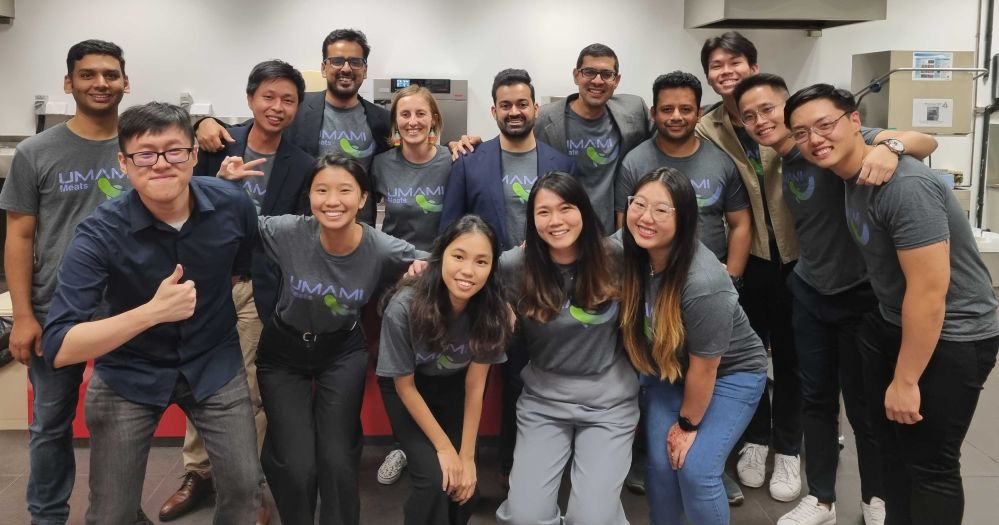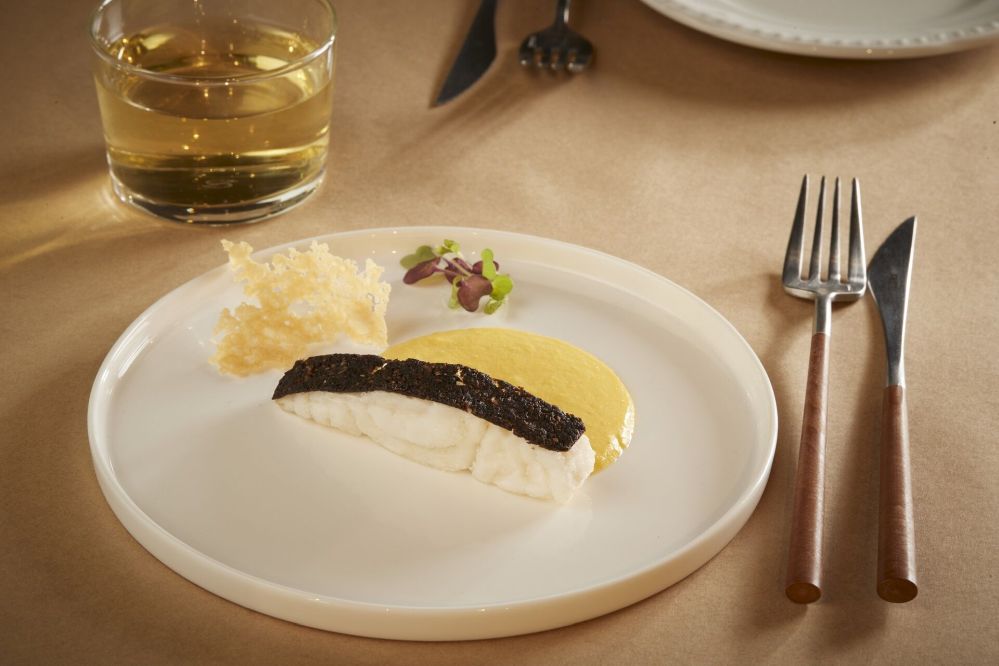What’s the optimal size and scope for a commercial-scale cultivated meat facility? And who is going to fund these facilities if VC funds are no longer willing to stump up cash for capex projects?
Josh Tetrick, whose plans to build a large-scale cultivated chicken plant have been thwarted due to a lack of funds, recently observed, “We need to figure out a way to build large-scale facilities without spending north of half a billion dollars.”
But even if you can build a viable plant for $100-200 million, says Mihir Pershad, founder and CEO at Singapore-based startup UMAMI Bioworks, funding it is still a huge challenge.
‘How does this capital structure get to an exit that makes sense?’
Speaking to AgFunderNews after unveiling plans to build a cultivated meat facility in the Kulim Hi-Tech Park in Malaysia with Cell AgriTech, Pershad said: “I think a few years ago investors got caught up in the idea of a thing that seemed like it should exist, without necessarily building a philosophy about how it might come to exist in the world in a real way.
“It led to a lot of investments before they started picking up on things that were probably obvious from the start around capex issues and exit scenarios,” added Pershad, who has a variety of backers from Japanese seafood giant Maruha Nichiro to early stage VC investors such as Better Bite Ventures, but has also secured $2m+ in non-dilutive funding including a SIIRD [Singapore Israel Industrial R&D Foundation] grant with Israeli cultivated meat startup Steakholder Foods.
He added: “If I raise $150 million pre-revenue and I have to raise another $100 million to build factories after that, how does this capital structure get to an exit that makes sense? Even if you’ve financed it with debt, you’re still carrying $200 million in debt on your books, which makes it really hard for someone to acquire you.
“Our view is that startups cannot be in the capex business. Instead, we need to figure out where we can tap into expertise, capital and muscle from existing industry and use that to help us scale however we can.”

‘We have the tech, but we have to partner with food companies’
At UMAMI Bioworks, he said, “We have the tech, but we have to partner with food companies who generate a lot of cash that can be turned into capex investments in future production capacity. It’s also much easier for me to get traditional bank debt financing for a factory if there’s an offtake agreement from the biggest seafood company in the world behind it, or better, an operational agreement where they’re actually going to be running the factory, because that’s what they’re good at.
“We’re working with three or four very large food companies right now and our goal is that our customers are signing commitments to build factories. First you have to get buy-in from product development, because they have to establish is this even a product worth selling? Phase two is the techno economic evaluation so you can convince the CFO.”

‘We believe we can do profitable production from 2,000-liter reactors for premium species’
As for the size and scale of facilities, bigger is not always better, he said, at least for the first wave of commercial-scale facilities. “We believe we can do profitable production from 2,000-liter reactors for premium species [such as eel and grouper], and we as we go to larger volumes, 10,000-liters makes sense.
“But I’m intensely skeptical of these massive reactors [GOOD Meat, for example, had commissioned 250,000-L reactors, uncharted territory for animal cell culture]. Even if you could make the biology work, the operational risk to reward [calculation] doesn’t pan out. If you have a contamination one of those [large] reactors is probably unprofitable for the whole quarter. Even if the risk is only 1%, it’s not worth it.”
As for metrics that investors sometimes ask about such as doubling times or cell density or differentiation efficiency, he said, “It all comes down to one number, which is dollars per kilogram per day, and eventually dollars per ton per day. It’s a cost and tim-bound productivity metric. I can increase cell density, but if I have to use more expensive media to do it, then that may not be a tradeoff worth making, so you can’t look at any of these metrics in isolation.”
He added: “In our process, we can proliferate and differentiate cells fully in suspension. We are able to run pseudo-continuous manufacturing that allows us to get massive improvements in productivity versus a traditional fed batch approach.
“We’ll see what the regulators let us do but biologically, we’re capable of long process runs with many harvests, which means we can run smaller reactors, with less capex and much higher productivity per dollar of investment.”
For 100% cultivated products, he said, “I don’t see a path to scale in the near term, so we’re looking at hybrid products where we combine cultivated seafood and plant-based proteins, rather than starches or ingredients with no real nutritional value.”
‘We’re focusing on endangered species that cannot be commercially farmed’
UMAMI Bioworks, which uses mesenchymal stem cells that it triggers to differentiate into fat or muscle, is focusing on high-value endangered species that cannot be commercially farmed, including eel and grouper, “which goes for $50-60/kilo and up to $100/kilo at Chinese New Year,” said Pershad.
“The eel supply has cratered in the last 15 years; they have gone from at risk to critically endangered, and the same thing is starting to happen with other species. What nobody reports is that subsidies make half of all deep sea fish profitable, and that’s not sustainable. So at some point, it becomes a smart financial decision for [traditional] seafood companies to partner [with cultivated meat companies]. And that’s really our core thesis.”
The new facility in Malaysia
For UMAMI Bioworks, the goal is tech transfer, he said. “We’re basically delivering a plug and play factory in a box, so hardware, process, biology comes from us, and then the operational expertise and the management of the facility is the purview of Cell AgriTech.
“This project will be financed in a couple of ways, so some government support, some private investors plus some investment directly from CellAgriTech; we’re in the process of putting those pieces together, but the facility and the space have already been secured.”
In the first instance, he said, “We’re building a tech demonstration in Singapore that that will be operational in the next few months and will be up to 200 liters, allowing us to do dozens of kilograms per harvest. We’ll then have a single pilot line in Malaysia at a facility that is being provisioned in Penang. We expect the pilot line to be operational in Q1 2025, and the first full-scale line to be up in Q1 2026.”
The regulatory pathway
Asked about the regulatory pathway, he said: “We’re actively liaising with the Ministry of Health in Malaysia about the path forward. Malaysia has been building a very strong biomanufacturing industry, but they’ve got to be able to keep up with the regulation to enable that. We have started by working with Halal processors to get clarity [on whether the cultivated seafood products are Halal] and we expect that in the next few months.
“Malaysia’s current food law says no to so-called ‘imitation’ products. But if you create the rationale, which I think the Halal framework will do, which says this product is still actually from an animal, it’s still actual fish, and as long as it’s harvested in a certain way it remains Halal, that should open a regulatory pathway based on discussions that we’ve had.”
Is 3D printing scalable?
But how scalable is UMAMI Bioworks’ approach?
“My customers are the biggest seafood companies in the world, and if I can’t talk to them about millions of pounds of product, it’s not a relevant conversation for them,” said Pershad. “And so with Steakholder Foods, our partnership has been geared towards that.
“The 3D printing approach we’re working on with Steakholder Foods right now is basically printing products that are ready to cook, so there’s no kind of maturation incubation phase [where animal cells and other materials are printed and then go through a maturation phase to form tissues]. It’s basically micro extrusion, and we can print a couple of 100 kilos per hour. But we’d need to get to multiple tons per hour if we’re making something like a white fish fillet, and from what we’re seen they’re very close to [being able to do] that.”
But 3D printing is only one approach, he added. “Different technologies will be needed for different applications. If you’re going to try to make tuna, which is a very fibrous, firm kind of fish, that’s going to require a different approach to something very flaky. The other issue is how well the fish responds to freezing and thawing vs a high-grade never-frozen product going into a high-end restaurant.
“So we’re exploring a couple of different approaches with companies that are experts in food forming technology.”
Consumer appeal
As for the consumer drivers for cultivated fish, he said, “Right now, I’d say it’s not climate, and it won’t be price for a while. So we have to focus on other things, whether it’s shelf life, product quality, nutritional value, safety, and being free of heavy metals and microplastics.”
The new plant in Malaysia
The UMAMI/Cell AgriTech facility in the Kulim Hi-Tech Park in Malaysia, the first [pilot-scale] phase of which is scheduled to open in Q1 2025, will contain up to five full-scale production lines when completed. The site, which will be powered in part by solar energy, will span 96,000 square feet with a projected annual output of 3,000-plus tons (6 million pounds).
To put this in perspective, UPSIDE Foods’ planned site near Chicago will have an initial capacity of millions of pounds and the potential to expand to over 30million pounds, while Believer Meats’ plant in North Carolina will have a capacity of at least 22 million pounds once fully operational.
Under a deal announced at COP28, UMAMI Bioworks will develop the core production technologies, including cell lines, growth media, and “modular, automated production lines,” while Cell AgriTech will focus on running the facility and driving operational efficiencies.




